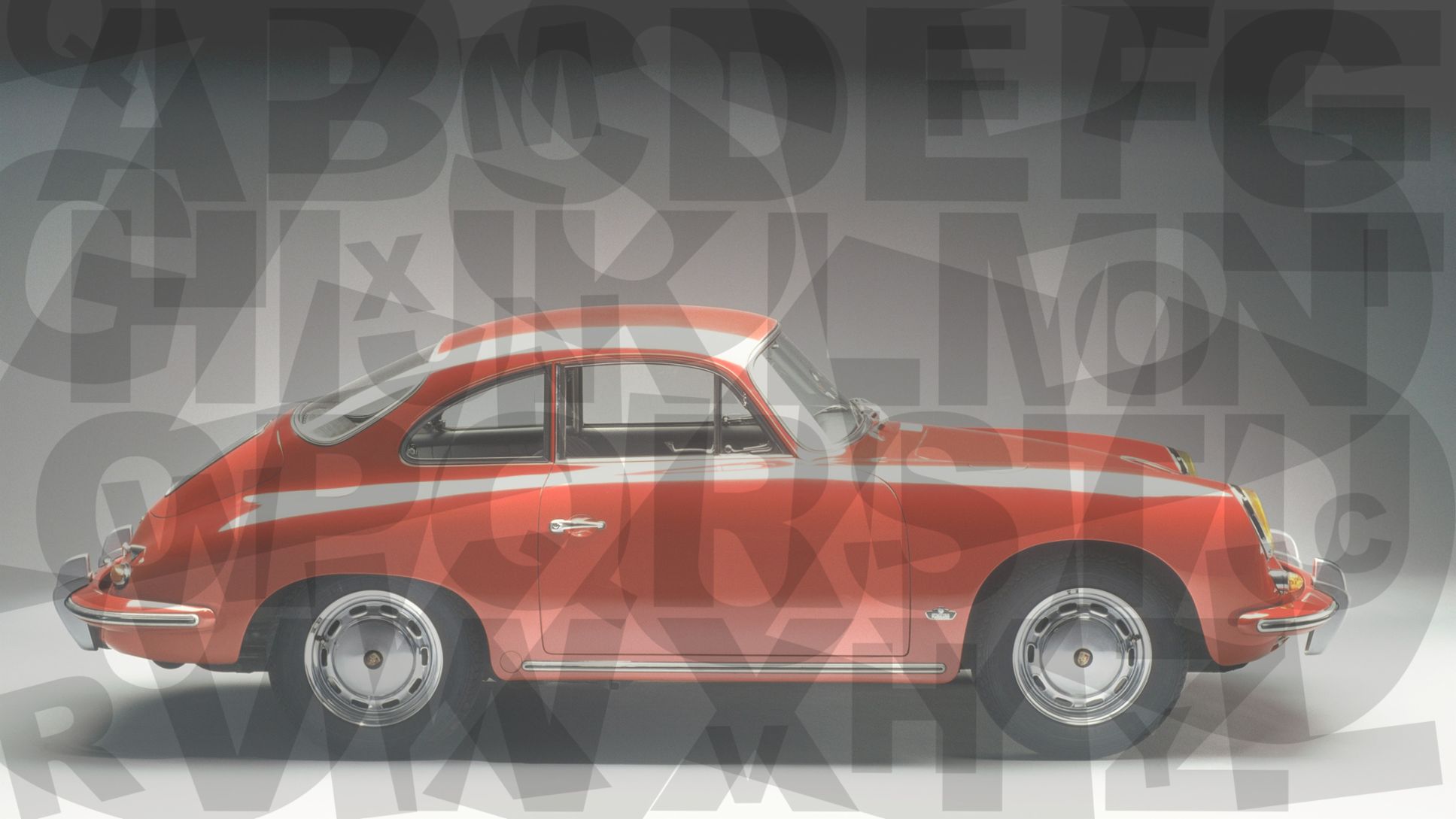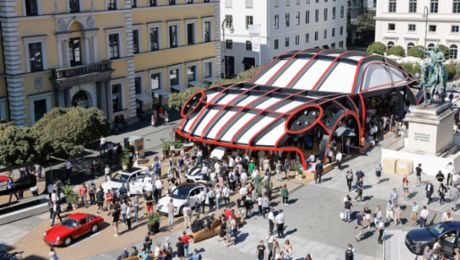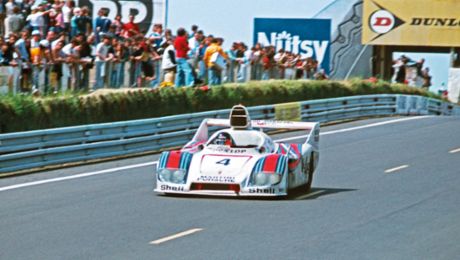A
Aluminum Can. True, “Aluminum Can“ is not really flattering for a Porsche. Still, this term became established for the aluminum-bodied Porsche 356 SL that won the 24 Hours of Le Mans in 1951, a race already legendary at the time. And it did so with just 40 hp. The aluminum can is of course still around ready to be seen – at the museum.
American Roadster. They say it was American GIs stationed in Germany who called for an even lighter, purer Porsche 356 in the early 1950s. They got it – however, only 21 models of the type were built by Gläser. The predecessor of the 1953 Speedster, known as the “American Roadster“, lost around 60 kilograms compared to the regular 356 convertible, for example by omitting the external door handles, hub caps and the soft top including the linkage. The combination of 600 kg and 70 hp were enough to ensure an output of 112 mph. Max Hoffman, Porsche importer to the U.S., picked up the idea and demanded a Speedster model to be produced for the American market, too. And of course he got it.
B
Bel Air. When Porschists referred to the “Bel Air“ among themselves in 1965, they used a code – at that stage nobody was supposed to find out that the open Porsche with the huge bar would be called “Targa“ (derived from the famous Sicilian race “Targa Florio“ – with the word “Targa“ meaning “shield“, all of which coincidentally fits). Naturally, the name “Bel Air“ was borrowed from the posh neighborhood in Los Angeles – possibly due to the erroneous assumption that it meant something like “good (belle) air“. The place, however, was founded by Alphonzo E. Bell in 1923 and that’s where the name comes from…
Bohlmann Bags. It is a very special recognition at Porsche when a technical refinement is named after an employee. Well-known examples include the Fuhrmann engine, the Fuchs rim (an honored supplier), or the Jörg muffler. It seems that a certain Mr. Bohlmann came up with the storage compartments in the trunk of the 924 and the 944. Whether historical sources abstained from passing down the first name because the inventor was employed at the VW plant in Wolfsburg is something that probably only long-serving Porsche (or VW) archivists will be able to answer…
Bonanza Effect. Guys aged between 50 and 60 years today will remember the guitar staccato that blared through the living rooms once a week: Dum-dada-dum-dadadum-dadadum-dadadum-dum...., and then Adam, Joe and giant Hoss with Dad Ben Cartwright trotted off to pacify the Wild West. It’s this theme song and of course the constant galloping of horses that were eponymous for the effect that occurs if the engine bucks when coasting, causing the car to build up. It may also happen if power transmission at the clutch is too abrupt, which is likely to happen to various old 911 models. Dadadum..
C
Crashbox. At the sound of the word, aficionados grimace with pain as if they had just bitten into a lemon with a hole in their tooth: “Crashbox“ sounds like a scrap press in operation. And that’s what it’s like when gears are forced to cooperate, even though they don’t fit at all. Such evil sounds could be heard time and again coming off the gearbox of the early 356 Porsches (years of construction 1950 through 1952) since the transmission was unsynchronized. Until the present day, this poses a challenge to drivers: they need to engage the clutch when throwing in and out of gear. They have to learn what gear changing is and build a relationship with the car. Then it just hurts a little.
Christel von der Post. Austrian driver Gerhard Plattner, aka the king of fuel-efficient long-distance driving on public roads, was not always easy to cope with – co-drivers said he was sometimes hard of hearing. That might also be the reason why he was a big fan of military marches. His never-ending journeys are definitely legendary – especially those at the wheel of “Christel von der Post“ (or post mistress Christel). The name can be traced back to a film from the 1950s about a post mistress. Plattner used this rather unflattering name to refer to his yellow 924 that Porsche placed at his disposal (German post vans have always been yellow) and that he used for his round-the-world trip that he nearly managed to do at a stretch. The gag: The car had a car phone. So you were able to call Plattner during his nearly 40,000 km long trip. He supposedly even picked up the phone on occasion.
D
Doctor’s Car. Just to thwart fertile imaginations right from the start: No, the Doctor’s Car was not a special large-capacity Porsche made for games of any kind. The doctor wouldn’t have approved of playing doctor anyway, since he was an upstanding Austrian citizen. But yes, good-looking Ferry Porsche was indeed a doctor – and as such, his employees gave him a very special 928 S for his 75th birthday. First, it was longer than the others and thus offered more legroom in the back and second, it was moss green. Allegedly, the doctor drove the car himself for a long while. Even today, it is still family-owned.
“Dreikantschaber“ or the Wedge Blade. That’s another rather unflattering name for a famous Porsche – but at least it’s easier to keep in mind than the official model name 356 B 2000 GS Carrera GT. It’s an aluminum-bodied racing version of the 356 B coupe, presented at the 24 Hours of Le Mans in 1963 with a 2-liter engine and an aerodynamic aluminum body designed by F.A. Porsche. The tail is pulled further down, the roof ends abruptly – in contrast to the floating rear of the serial 356. The resulting vehicle led to the nickname “Dreikantschaber“ or wedge blade, a tool used by the designers at Porsche to work on their clay models.
Info
Text first published in "rampclassics", issue 4
text: Roland Löwisch


